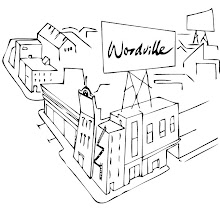Like thousands of other people, I tuned in to
watch Channel 4’s The Plane Crash last
week. I’m a bit of a masochist really; a nervy flyer due to fly out on a
business trip just seven days later. But I went ahead and watched anyway.
As I boarded my plane this week, I couldn’t help
but think back to The Plane Crash. In
the staged crash the nose of the plane snapped off, “killing” the test dummies
unfortunate enough to have been placed in the front 12 rows. According to the
programme, those sitting at the back would have escaped unharmed. So I made a
beeline for row 31, smug that I had bagged myself a “safe” seat. The people in
“club class” were welcome to enjoy their extended leg room and extra cups of
tea and coffee – at their peril.
Many critics argued that The Plane Crash was little more than a publicity stunt for Channel
4, and accused the broadcaster of bad taste considering that 19 people (seven
of them Britons) had died just nine days earlier in a plane crash on the
outskirts of Kathmandu, Nepal. I share their sentiment on that, but also, did Channel
4 not consider that it was bad publicity for flying?
My short flight to Milan was the longest two hours
of my life. Every bump sounded like an engine exploding; every creak sounded
like the bodywork breaking; and every time the engine quietened I was convinced
the plane was going to drop from the sky. I couldn’t help wishing I’d refrained
from watching that programme.
I also noticed considerably more people sitting
towards the back of the plane – but in truth it doesn’t make a blind bit of
difference where you sit as every crash is different. Is it really healthy to
add to the nerves of flyers, and have them spouting all sorts of irrational
theories and paranoia about where and how to sit?
The multi-million pound experiment was meant to
provide data on the impact crashes have on the human body. It may have done,
but will it really help passengers in future crash situations, when the exact
circumstances of landing are as yet unknown?
One thing that struck me during the experiment,
was that while the poor passengers were left in the plane to meet their
destiny, crew members simply slipped on a parachute and effortlessly jumped to
safety. I was left questioning why this option is not available for passengers
on ordinary flights. If The Plane Crash
is anything to go by, there would be plenty of time to get everyone out before
the jet ploughed into the ground, thus saving the “lives” of the test dummies
in rows 1-12.
My point is that while The Plane Crash was without a doubt a compelling change from Z-list
reality drivel, it was bad PR for flying. If I were a press officer for
Easyjet, British Airways or Ryanair I would be less than thrilled with the
documentary, which bought the reality of flying into sharp relief. If something
goes wrong at 30,000ft, there’s really not a lot anyone can do.
By Jessica Matthias


No comments:
Post a Comment